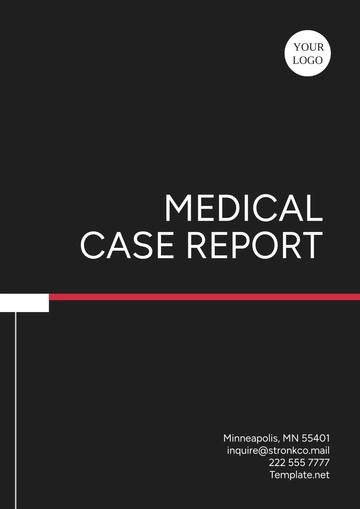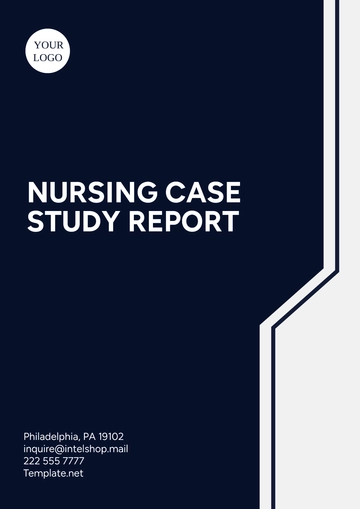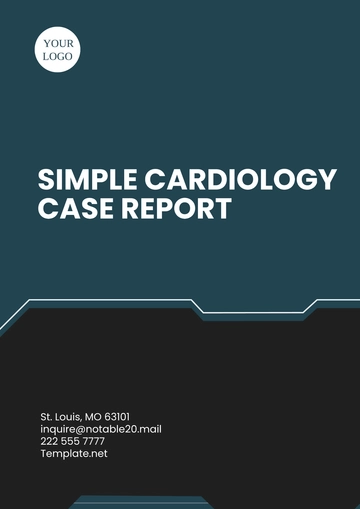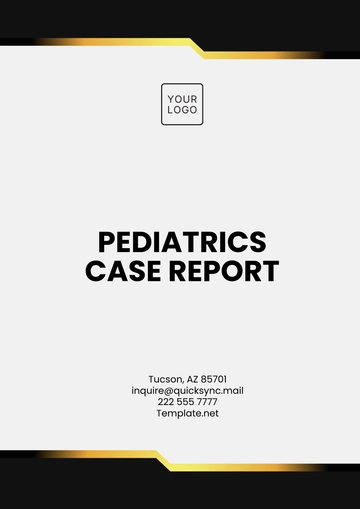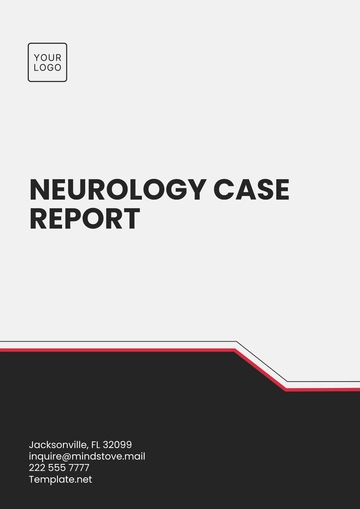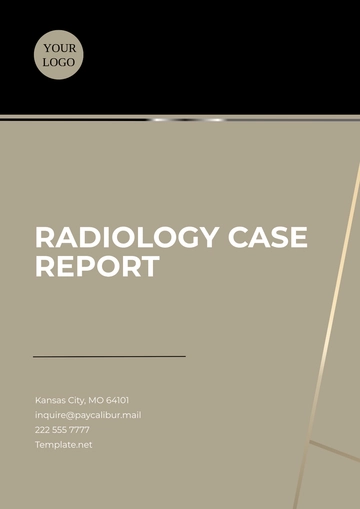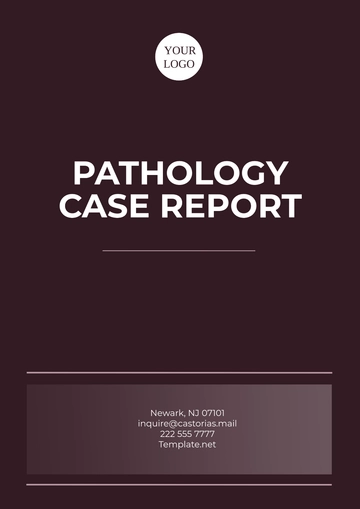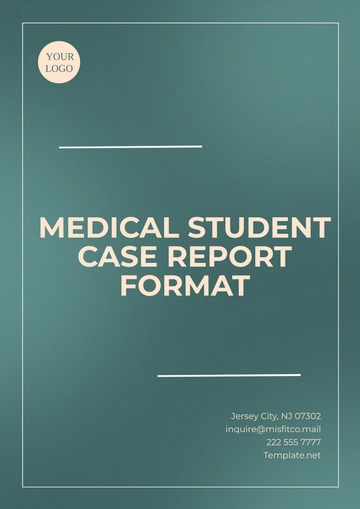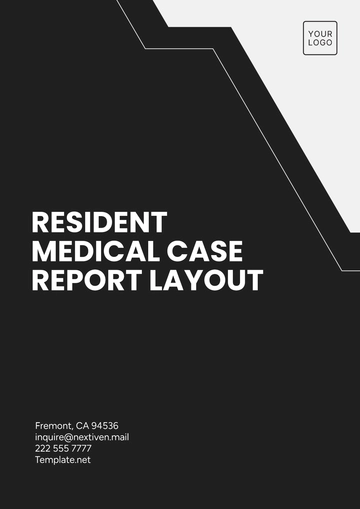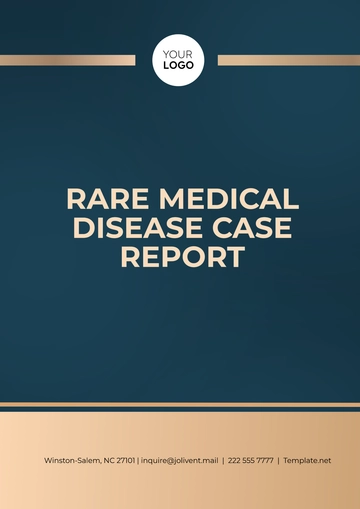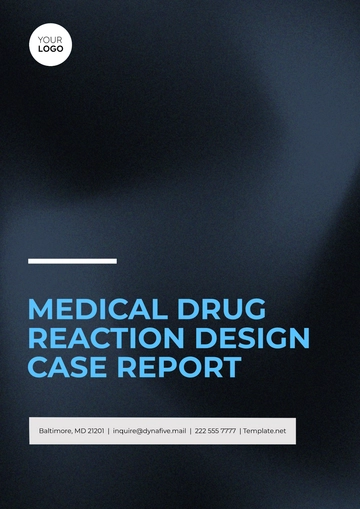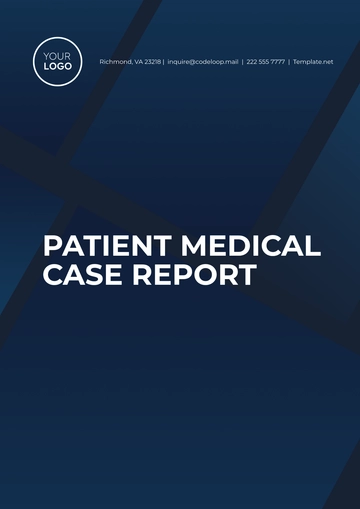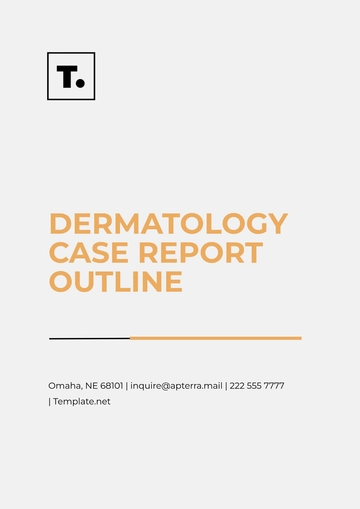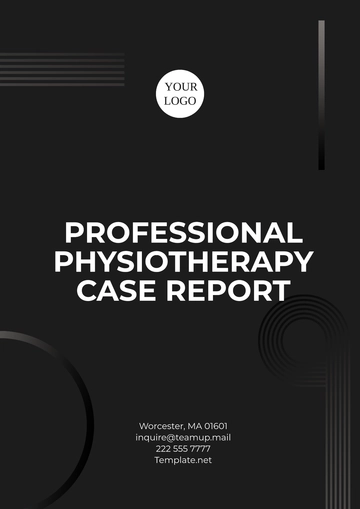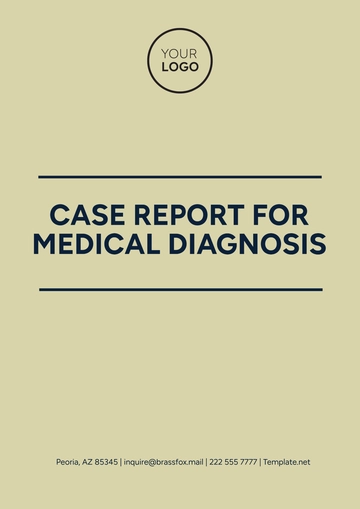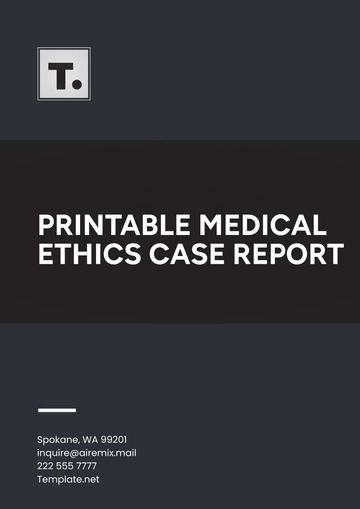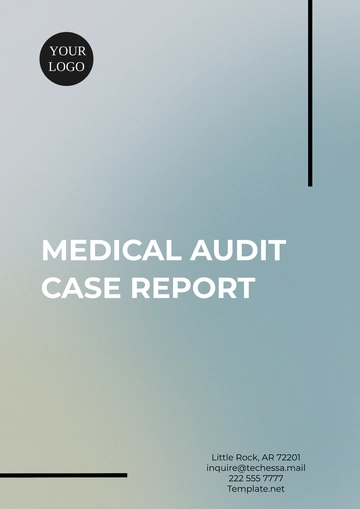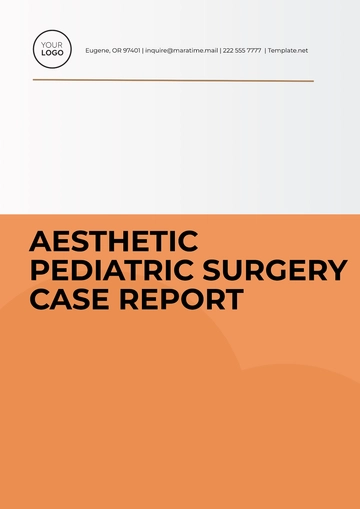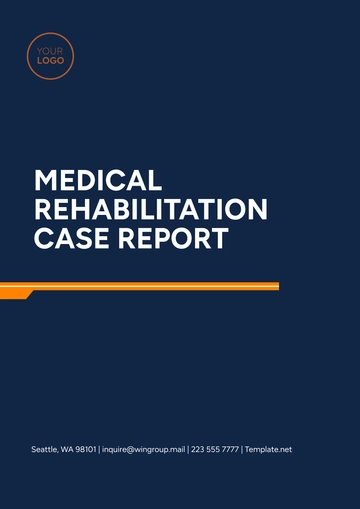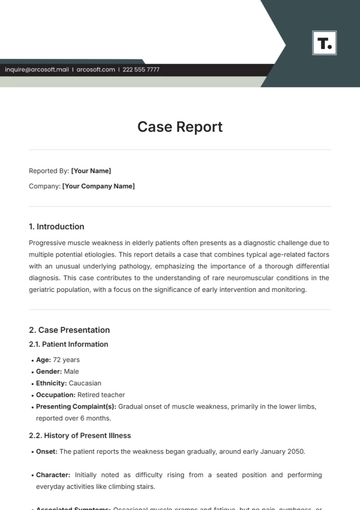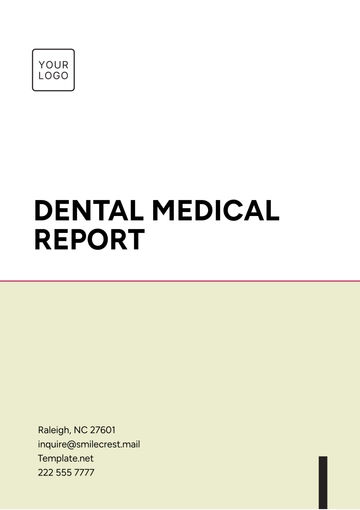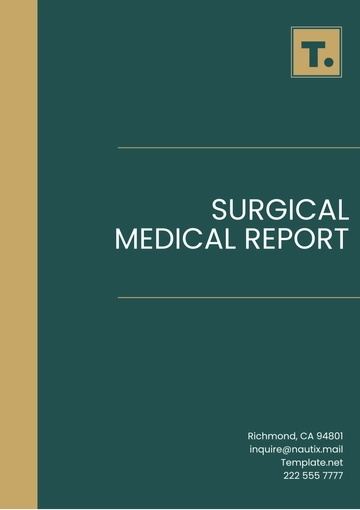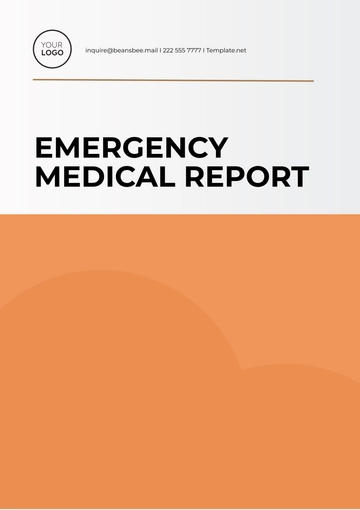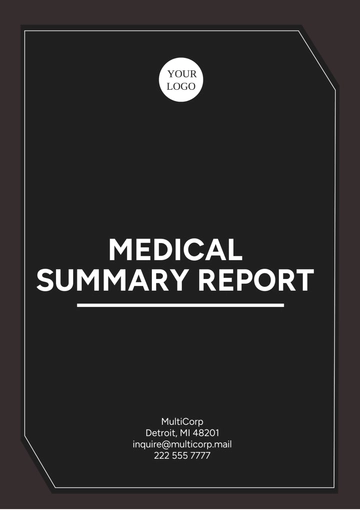Free Case Report
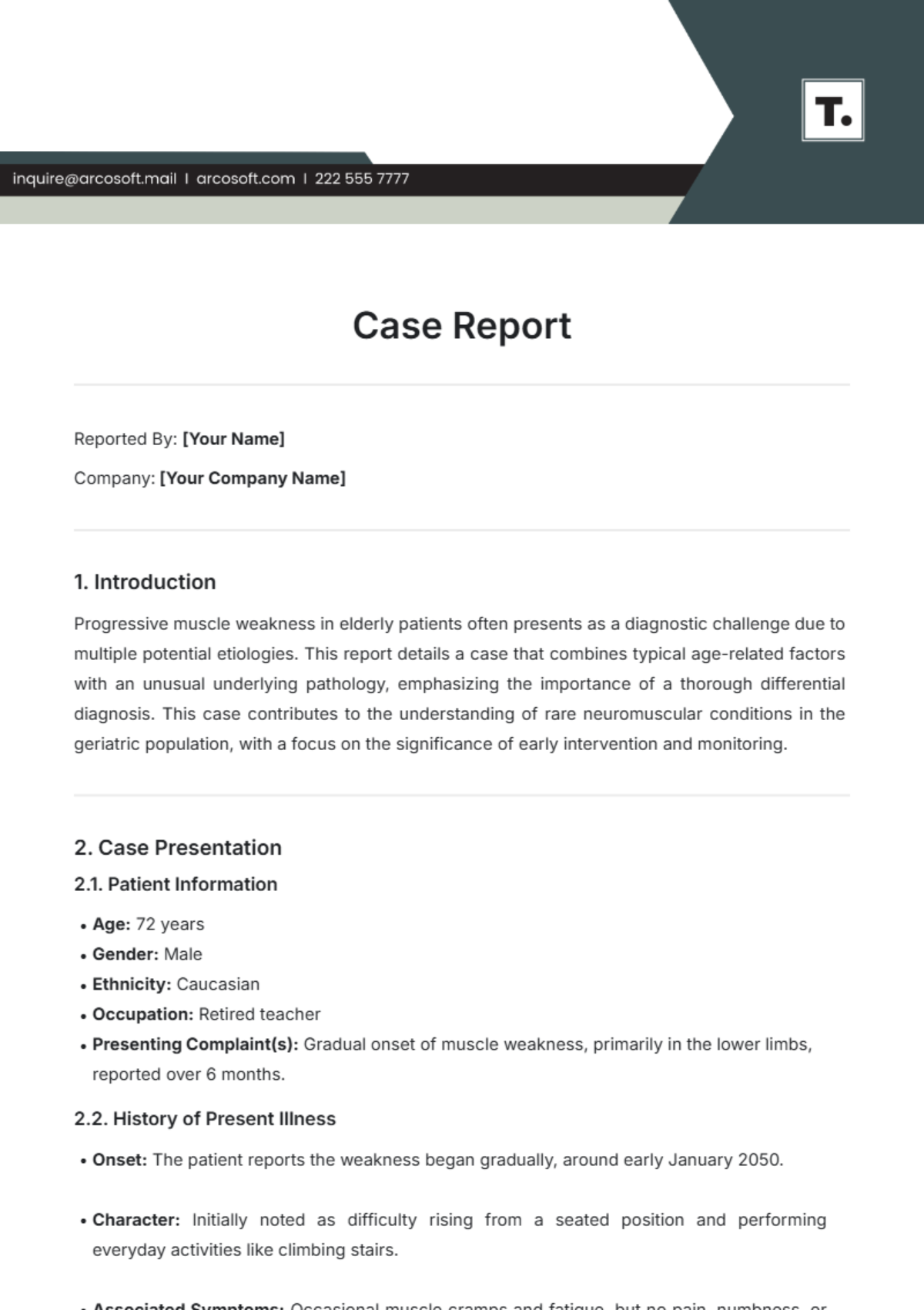
Reported By: [Your Name]
Company: [Your Company Name]
1. Introduction
Progressive muscle weakness in elderly patients often presents as a diagnostic challenge due to multiple potential etiologies. This report details a case that combines typical age-related factors with an unusual underlying pathology, emphasizing the importance of a thorough differential diagnosis. This case contributes to the understanding of rare neuromuscular conditions in the geriatric population, with a focus on the significance of early intervention and monitoring.
2. Case Presentation
2.1. Patient Information
Age: 72 years
Gender: Male
Ethnicity: Caucasian
Occupation: Retired teacher
Presenting Complaint(s): Gradual onset of muscle weakness, primarily in the lower limbs, reported over 6 months.
2.2. History of Present Illness
Onset: The patient reports the weakness began gradually, around early January 2050.
Character: Initially noted as difficulty rising from a seated position and performing everyday activities like climbing stairs.
Associated Symptoms: Occasional muscle cramps and fatigue, but no pain, numbness, or tingling.
2.3. Past Medical History
Hypertension - managed with medication for 15 years.
Diabetes Mellitus Type 2 - diagnosed 10 years ago, currently on metformin.
No significant family history of neuromuscular diseases or genetic disorders.
2.4. Medications and Allergies
Current Medications:
Lisinopril 10 mg once daily
Metformin 500 mg twice daily
Known Allergies: Penicillin - causes rash and hives
2.5. Social and Lifestyle History
Smoking Status: Non-smoker
Alcohol Consumption: Occasional, 1-2 drinks per month
Physical Activity: Previously active with daily walking; limited by weakness since early 2050
3. Investigations and Diagnostics
3.1. Physical Examination
Examination | Findings |
|---|---|
General Appearance | Alert and cooperative; appears fatigued |
Vital Signs | Temperature: 98.6°F, Pulse: 80 bpm, BP: 130/80 mmHg, Respiratory Rate: 18 breaths/min, O2 Saturation: 97% on room air |
Cardiovascular | Normal heart sounds, no murmurs |
Respiratory | Clear breath sounds bilaterally |
Abdomen | Soft, non-tender, no masses |
Neurological | Decreased muscle strength in lower extremities (3/5), no sensory deficits, reflexes normal except slightly diminished at the ankles |
3.2. Laboratory Investigations
Test | Result | Normal Range |
|---|---|---|
Complete Blood Count | Normal | WBC: 4.0-11.0 10^9/L, RBC: 4.7-6.1 10^12/L |
Liver Function Tests | Within normal limits | Total bilirubin: 0.1-1.2 mg/dL |
Renal Profile | Normal | BUN: 7-20 mg/dL, Creatinine: 0.6-1.2 mg/dL |
Thyroid Panel | TSH: 4.0 mIU/L | 0.4-4.0 mIU/L |
Creatine Kinase (CK) | Elevated at 900 U/L | Normal: 60-400 U/L |
3.3. Imaging
MRI of the Lower Limbs: Showed mild atrophy of quadriceps muscles without significant edema.
EMG Study: Demonstrated evidence of chronic motor neuron degeneration, suggesting a neuromuscular disorder.
4. Differential Diagnosis
Primary Diagnosis Considered: Amyotrophic Lateral Sclerosis (ALS) - based on progressive muscle weakness and EMG findings.
Secondary Possible Diagnoses:
Polymyositis - muscle weakness with elevated CK levels, although lacks characteristic muscle pain.
Inclusion Body Myositis - considered due to age and progression, but EMG findings were more consistent with ALS.
Chronic Inflammatory Demyelinating Polyneuropathy (CIDP) - ruled out due to lack of sensory involvement and normal reflexes.
5. Treatment and Management
5.1. Initial Management
Medications Prescribed:
Riluzole 50 mg twice daily to slow disease progression.
Vitamin D Supplement due to a low baseline level.
Non-Pharmacological Interventions:
Referral to physical therapy for strength preservation.
Nutritional support to maintain caloric intake as muscle mass decreases.
5.2. Hospital Course
Intervention | Date | Outcome |
|---|---|---|
Initiation of Riluzole | January 15, 2050 | Tolerated without side effects |
Physical Therapy Initiation | February 1, 2050 | Gradual improvement in mobility |
Nutritional Counseling | February 10, 2050 | Moderate adherence reported |
5.3. Discharge Plan
Medications at Discharge: Continued Riluzole, added Vitamin D3 supplements.
Patient Education: Advised on energy conservation techniques, potential for symptom progression, and importance of regular follow-up.
6. Outcome and Follow-up
6.1. Short-term Outcome
The patient showed a mild improvement in mobility and was able to resume light activity with assistance from a walker by March 2050.
6.2. Long-term Follow-up
Follow-up Visit | Date | Findings/Outcome |
|---|---|---|
3 months | April 2050 | Stability in lower limb strength; no new symptoms. |
6 months | July 2050 | Slight progression of weakness noted, especially in the upper limbs. |
12 months | January 2051 | Further decline in strength; transitioning to wheelchair use. |
7. Discussion
7.1. Interpretation of Findings
This case aligns with typical ALS progression, showing muscle weakness with mild atrophy and elevated CK levels. EMG findings further support motor neuron involvement, consistent with ALS but atypical in onset due to the patient's advanced age.
7.2. Comparison to Similar Cases
Literature shows late-onset ALS is less common but follows a similar clinical progression, with slower disease course and longer periods of initial stability compared to younger-onset ALS.
7.3. Implications for Clinical Practice
Consideration of ALS in elderly patients with atypical neuromuscular symptoms can lead to earlier intervention and improved quality of life.
Importance of a multidisciplinary approach that includes physical therapy, nutritional support, and psychological support.
7.4. Limitations of the Case Report
The lack of genetic testing limits understanding of potential hereditary factors.
Further imaging, such as high-resolution muscle MRI, may provide additional insights but was unavailable at the treating facility.
8. Conclusion
Summary of Key Findings: This case illustrates a rare presentation of ALS in an elderly patient, highlighting the need for comprehensive neuromuscular evaluation in similar cases.
Future Directions: Research into ALS progression among older adults could yield insights into age-specific treatment approaches and supportive care models.
- 100% Customizable, free editor
- Access 1 Million+ Templates, photo’s & graphics
- Download or share as a template
- Click and replace photos, graphics, text, backgrounds
- Resize, crop, AI write & more
- Access advanced editor
Template.net’s Case Report Template is crafted to document case details effectively across various industries. This editable and customizable template allows easy input and personalization through our AI Editor Tool, making it suitable for detailed case documentation and analysis. Use this template to record critical case information comprehensively, ensuring professional consistency in documentation for clear communication and reference.
You may also like
- Sales Report
- Daily Report
- Project Report
- Business Report
- Weekly Report
- Incident Report
- Annual Report
- Report Layout
- Report Design
- Progress Report
- Marketing Report
- Company Report
- Monthly Report
- Audit Report
- Status Report
- School Report
- Reports Hr
- Management Report
- Project Status Report
- Handover Report
- Health And Safety Report
- Restaurant Report
- Construction Report
- Research Report
- Evaluation Report
- Investigation Report
- Employee Report
- Advertising Report
- Weekly Status Report
- Project Management Report
- Finance Report
- Service Report
- Technical Report
- Meeting Report
- Quarterly Report
- Inspection Report
- Medical Report
- Test Report
- Summary Report
- Inventory Report
- Valuation Report
- Operations Report
- Payroll Report
- Training Report
- Job Report
- Case Report
- Performance Report
- Board Report
- Internal Audit Report
- Student Report
- Monthly Management Report
- Small Business Report
- Accident Report
- Call Center Report
- Activity Report
- IT and Software Report
- Internship Report
- Visit Report
- Product Report
- Book Report
- Property Report
- Recruitment Report
- University Report
- Event Report
- SEO Report
- Conference Report
- Narrative Report
- Nursing Home Report
- Preschool Report
- Call Report
- Customer Report
- Employee Incident Report
- Accomplishment Report
- Social Media Report
- Work From Home Report
- Security Report
- Damage Report
- Quality Report
- Internal Report
- Nurse Report
- Real Estate Report
- Hotel Report
- Equipment Report
- Credit Report
- Field Report
- Non Profit Report
- Maintenance Report
- News Report
- Survey Report
- Executive Report
- Law Firm Report
- Advertising Agency Report
- Interior Design Report
- Travel Agency Report
- Stock Report
- Salon Report
- Bug Report
- Workplace Report
- Action Report
- Investor Report
- Cleaning Services Report
- Consulting Report
- Freelancer Report
- Site Visit Report
- Trip Report
- Classroom Observation Report
- Vehicle Report
- Final Report
- Software Report
